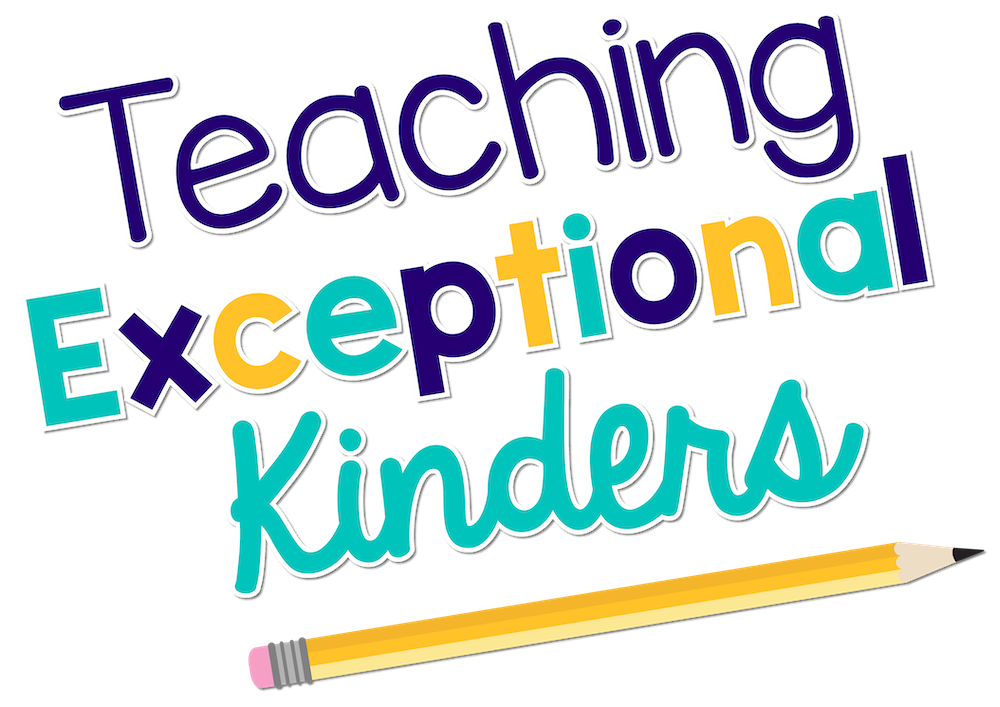Helpful Assessment Tips for Kindergarten Teachers
Does the thought of assessing your kindergarten students completely overwhelm you? I totally get it! Evaluating young students can be a time-consuming and challenging process, especially with so many core curriculum concepts to get through during the school year. Taking time out of the regular routine can be daunting! In this post, I wanted to share some of my best assessment tips for kindergarten teachers to help you streamline the evaluation process in your classroom.
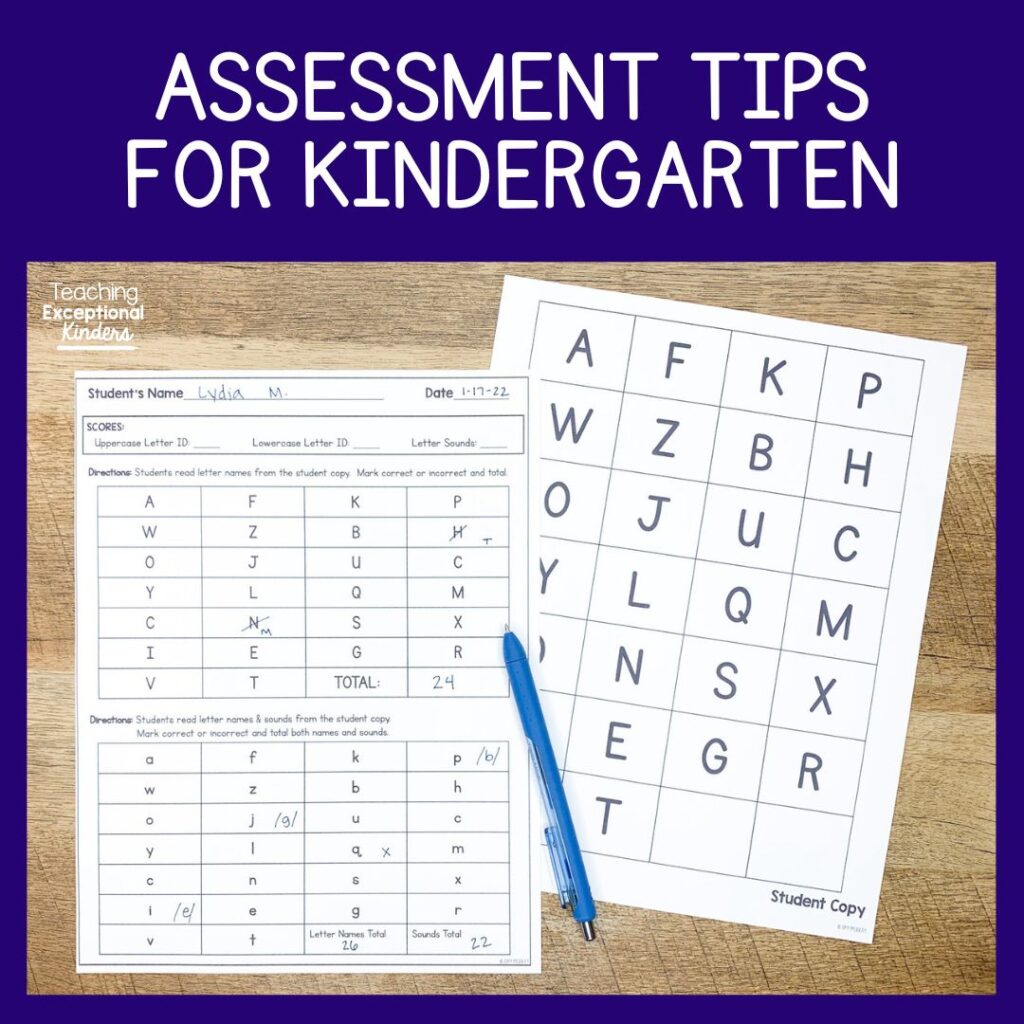
The Importance of Evaluation for Kindergarten Students
From the first kindergarten readiness assessment before school starts, students will experience many assessments as kindergartners. While there is much to be learned about students through informal assessments and daily observations, it’s important to get a clear picture of their skills through regular targeted assessments. With effective evaluations, you can:
- Monitor student progress
- Watch for trends in student performance, including knowledge gaps
- Create accurate and informative report cards and progress reports
- Develop a comprehensive instructional plan
- Organize small groups and centers rotations
- Provide more context and supporting data for intervention decisions
However, as beneficial as assessments are for educational planning, they can still be overwhelming to administer to a large group of five and six-year-olds!
Challenges of Assessment in Kindergarten
We all know how important it is to regularly assess our students, but it can definitely be easier said than done! Evaluating young children is a time-consuming process. Even though there are some assessments that could be done in larger groups, those whole-group assessments can be impacted by students’ fine motor skills, language development, and behavior.
Administering assessments individually can create the best picture of student performance, but it can be a laborious process. This is especially true if you don’t have extra help in your classroom! That is why I wanted to give you some tips for kindergarten assessments that will help you save time and sanity as you gather important information about your students.
Assessment Tips for Kindergarten Teachers
1. Use Simple Assessment Printables
It might seem like a time-saving strategy to use existing assignments and printables to gather information about your students. They’re completing these assignments anyway, right? In the long run, this can be time-consuming to piece together and it still might not provide all of the information you need.
Instead, I have found that it’s easiest to use simple assessment printables that are designed for the sole purpose of evaluating target skills. They don’t get lost in the shuffle of other assignments and you can quickly make sure you’re addressing all of the skills you want to evaluate. Just remember that the key word is simple! Use assessments with simple instructions and an easy-to-navigate layout.
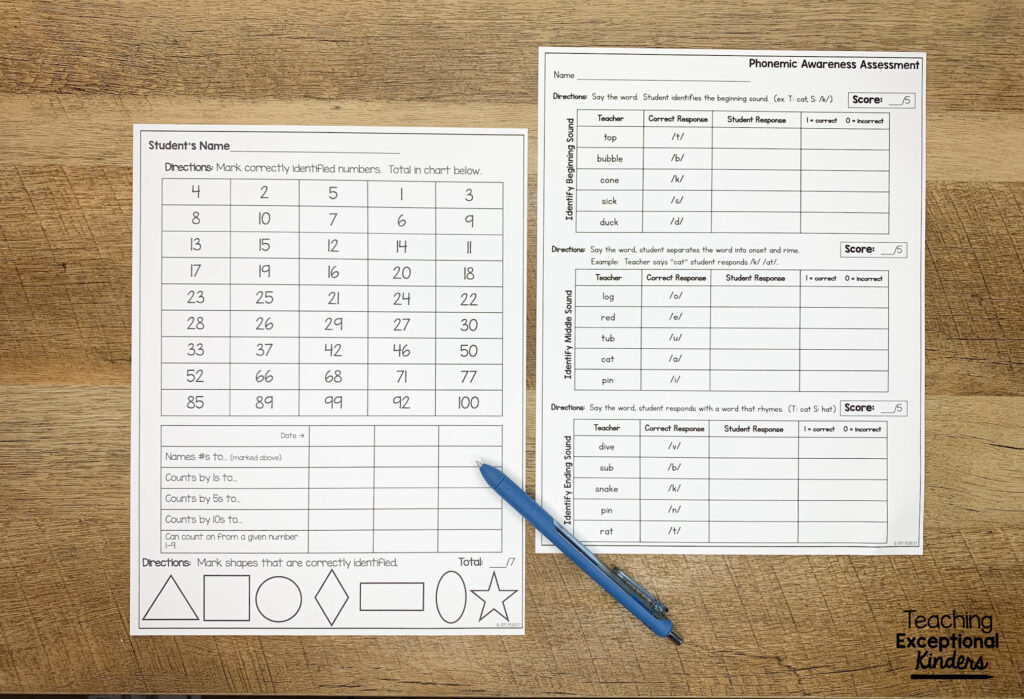
2. Create an Assessment Binder
Once you have selected the assessment printables you’d like to use, you can store them in an assessment binder. Put the assessment pages you will be using for individual assessments in sheet protectors so they’re ready for students. You can also store the completed recording sheets, answer keys, and assessment data.
An assessment binder will help you save precious time when you want to pull a couple of students aside for a quick evaluation. Just grab the binder off the shelf and you’ll have everything you need! It’s also helpful to have an assessment binder handy for professional learning community meetings or administration walkthroughs.
3. Color Code Recording Sheets for Reuse
To save space in your assessment binder, consider reusing the recording sheets! Instead of having one recording sheet for each testing session, you can use a different color pen and make your assessment notes on the same paper. It can also be motivating for students to see their progress visually! After completing an assessment, you might decide to show an individual student how many more green marks they had compared to how many blue marks they had after the previous evaluation.
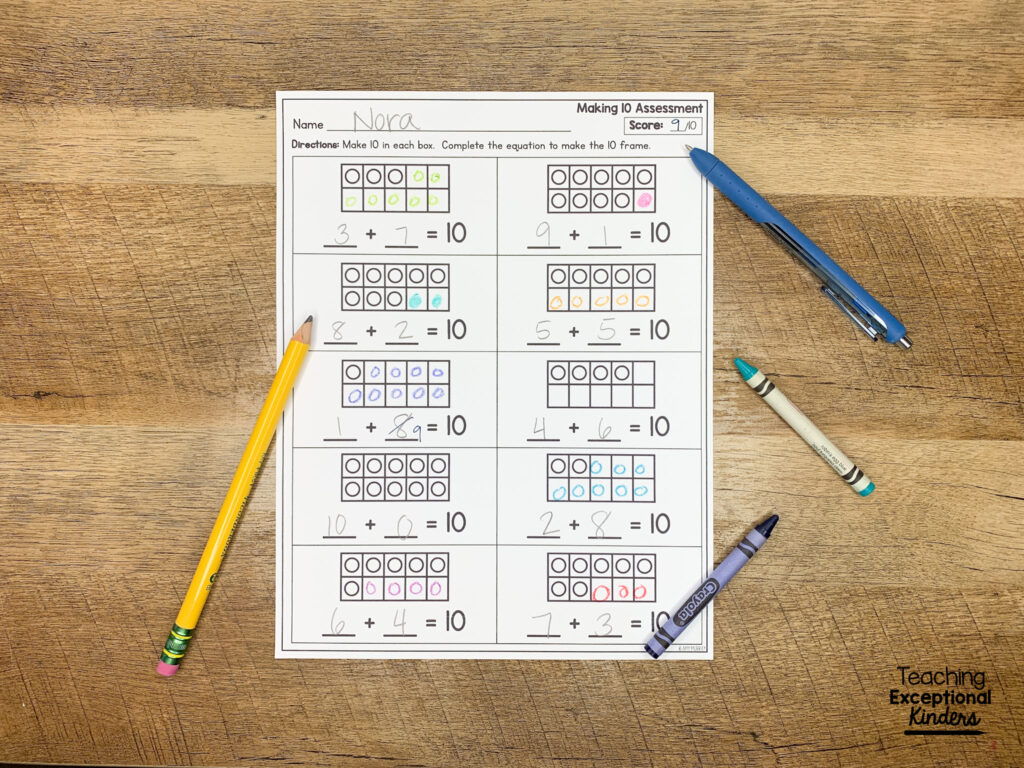
4. Make Use of Existing Pockets of Time
Once you have your assessment printables prepped and ready to go, it’s time to figure out when to administer these evaluations. The first place I suggest looking is any existing pockets of time in your schedule when you have fewer students in the classroom or are working with a small group of students. If you’re lucky enough to have some additional help in your classroom, you can time your assessments accordingly!
For example, you might decide to administer some math assessments with three or four students at a time during math rotations. You could also pull students aside during literacy centers for their individual phonics assessments.
5. Track as You Go
Taking care of a few assessments here and a few there might seem like a recipe for confusion! It’s important to keep track of completed assessments and student absences so you can make sure that all students have been evaluated. It’s helpful to have one class recording sheet with all of the scores for that round of testing. As you complete each evaluation, just add the score to your class list.
This also helps you see at a glance which students you should pull aside when you have some spare minutes for testing. Plus, when it’s time to complete report cards or progress reports, you’ll have all of the scores ready to go. You won’t have to sort through piles of assessments and papers in order to find the data you need.
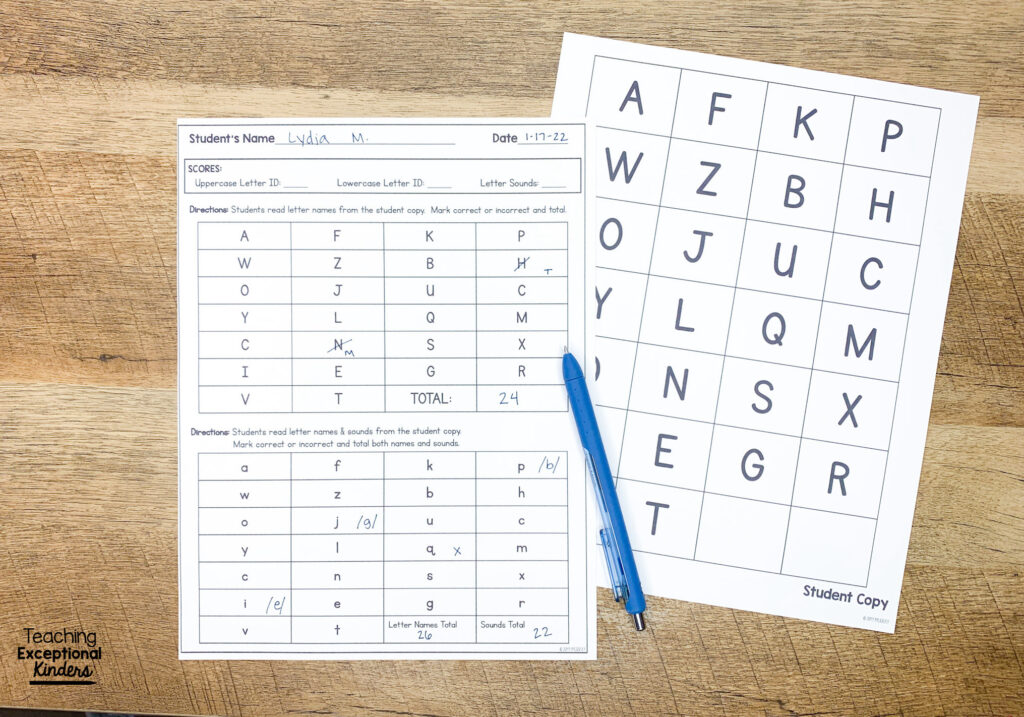
Printable Assessments for Kindergarten
I have created a set of printable assessments that you can use throughout the year in your kindergarten classroom. It has everything you need to streamline the math and phonics assessment process in your classroom. You’ll find the student assessment pages, recording sheets, cover pages, and checklists that you need to have a smooth evaluation experience!
Be sure to grab these printables before your next round of kindergarten math and phonics assessments! You can find them in the Teaching Exceptional Kinders shop or on Teachers Pay Teachers.
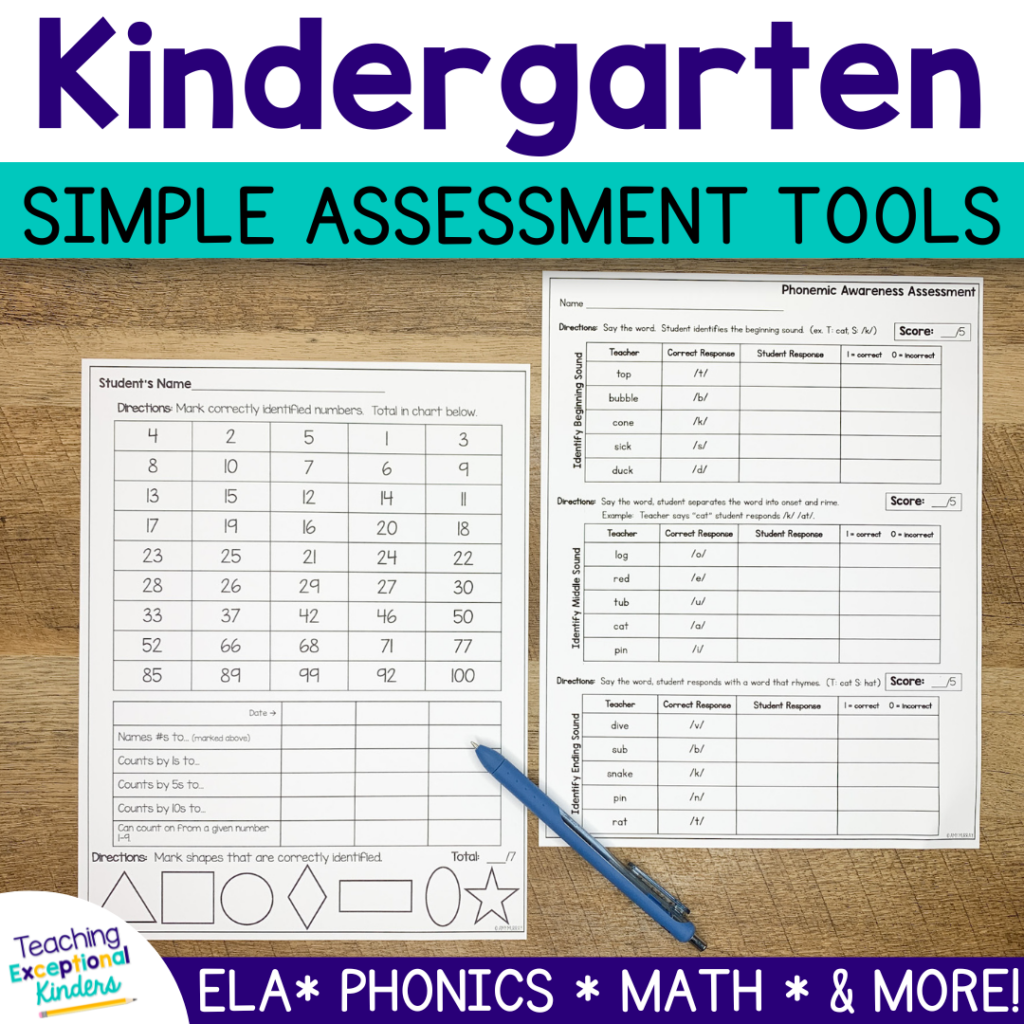
Save These Assessment Tips for Kindergarten
If you’d like to reference these kindergarten assessment tips later, be sure to save this post! Just add the pin below to your favorite teaching board on Pinterest. You’ll be able to quickly find these assessment ideas, tips, and resources whenever you need them!
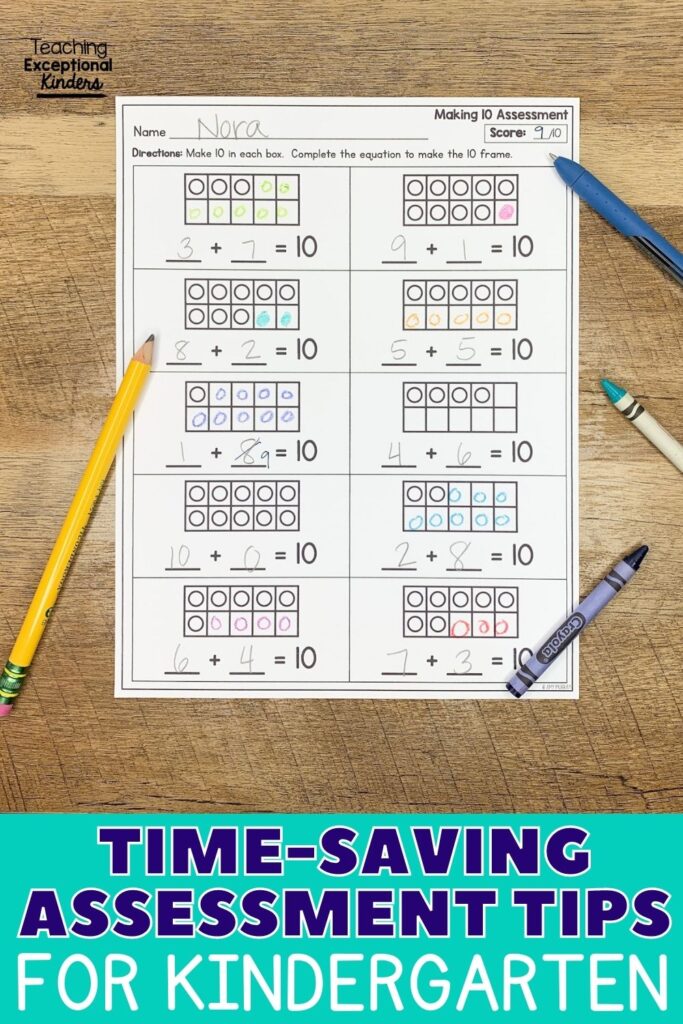
Amy
SITE DESIGN BY LAINE SUTHERLAND DESIGNS

